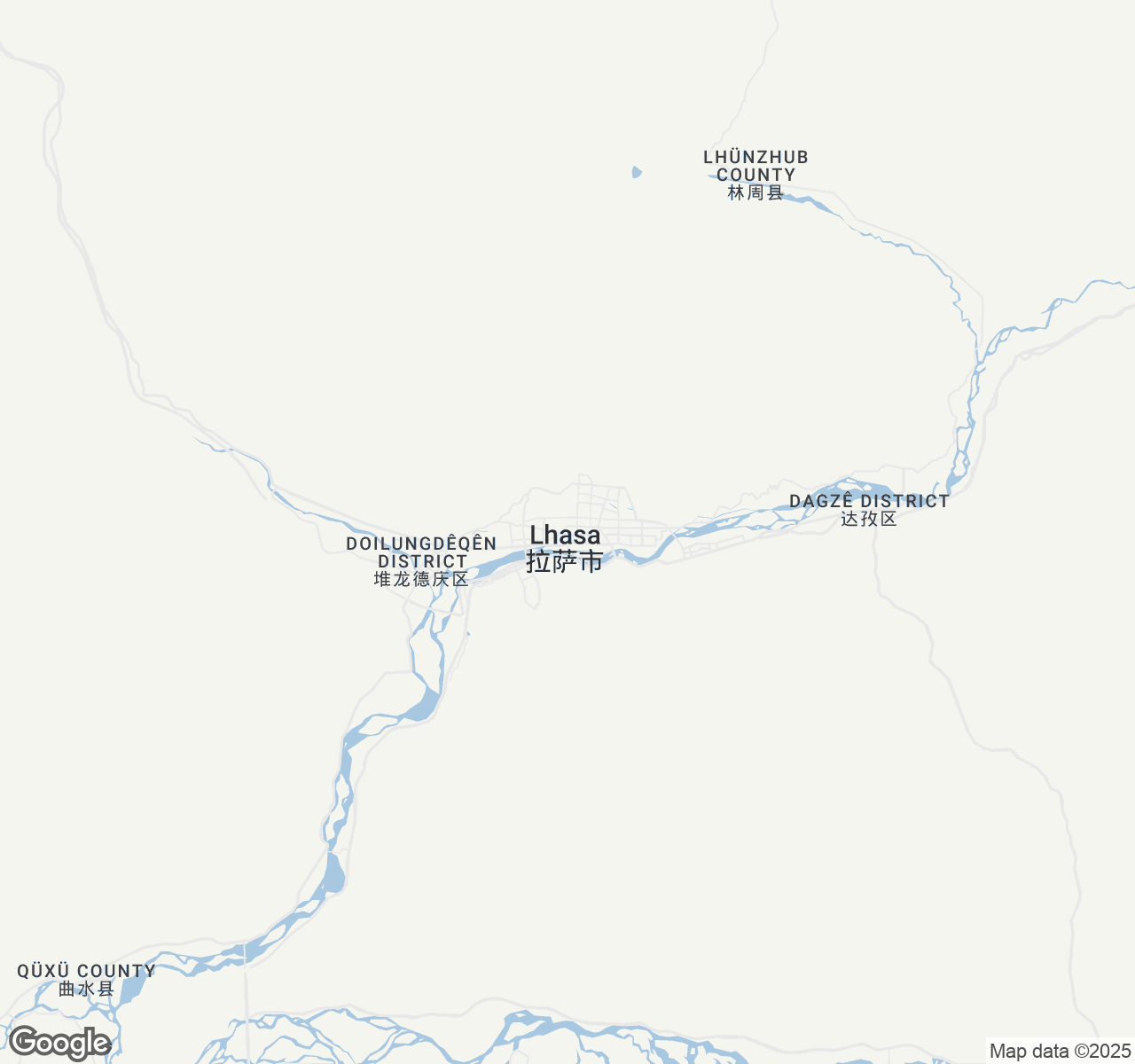
Things to Do in Lhasa
Discover the best of Lhasa
Plan Your Trip
Essential guides for timing and budgeting
Top Things to Do in Lhasa
Discover the best activities and experiences. Book now with our trusted partners and enjoy hassle-free adventures.
Your Guide to Lhasa
About Lhasa
Perched at 3,650 meters above sea level, Lhasa emerges like a mystical vision against the backdrop of the mighty Himalayas, its name literally meaning 'Place of the Gods.' This sacred city pulses with an otherworldly energy that has drawn pilgrims and wanderers for centuries. The golden roofs of the Potala Palace catch the crystalline mountain light, while prayer flags flutter like colorful prayers in the thin, pure air. Ancient monasteries echo with the deep resonance of horns and chanting monks, their red-robed figures moving through courtyards that have witnessed a thousand sunrises. In the bustling Barkhor Street, the scent of yak butter tea mingles with juniper incense as devotees spin prayer wheels in endless circumambulation. Here, time moves differently—measured not in hours but in the rhythm of prostrations, the turning of prayer wheels, and the eternal dance between earth and sky. Lhasa is more than a destination; it's a transformative journey into the heart of Tibetan Buddhism and the roof of the world.
Travel Tips
Transportation: Fly into Gonggar Airport (60km from city) for quickest acclimatization, or take the scenic Qinghai-Tibet Railway. Book domestic flights within China for better prices. Pre-arrange airport transfers as taxis are limited. Tibet permits are mandatory and must be obtained through registered tour operators.
Money: Chinese Yuan (CNY) is the only accepted currency. Bring sufficient cash as international cards rarely work outside major hotels. ATMs are scarce and unreliable. Budget hotels and local restaurants only accept cash. Exchange money in mainland China before arriving.
Cultural Respect: Walk clockwise around monasteries and stupas. Remove hats when entering temples and avoid pointing feet toward altars. Don't photograph without permission, especially monks or inside sacred spaces. Dress modestly covering shoulders and knees. Learn basic Tibetan greetings like 'Tashi Delek.'
Food Safety: Stick to bottled water and avoid raw vegetables initially. Try traditional yak butter tea and tsampa but introduce gradually. Street food from busy stalls is generally safe. Avoid dairy products outside reputable restaurants. Pack probiotics and basic stomach medications for dietary adjustment.
When to Visit
Lhasa's optimal visiting season spans May through October, with July-August being peak months featuring temperatures of 15-25°C (59-77°F) and minimal rainfall (100-150mm). Expect 40-60% higher accommodation prices during this period. June and September offer the sweet spot with pleasant 10-20°C weather, fewer crowds, and 20-30% lower costs. Winter (November-March) brings harsh conditions with temperatures dropping to -15°C (5°F), but offers authentic local experiences and 50% cheaper rates for hardy travelers. The monsoon barely touches Lhasa, making summer surprisingly dry. Spring (April-May) showcases blooming landscapes with mild 5-15°C temperatures and moderate pricing. Key festivals include Tibetan New Year (February/March), Saga Dawa Festival (May/June celebrating Buddha's enlightenment), and Shoton Festival (August featuring opera performances). Photography enthusiasts should visit October-November for crystal-clear mountain views and golden hour lighting. Altitude considerations favor gradual acclimatization, making longer stays preferable regardless of season. Budget travelers benefit from November-March visits, while luxury seekers should target May-June or September for optimal weather-comfort balance.

Lhasa location map